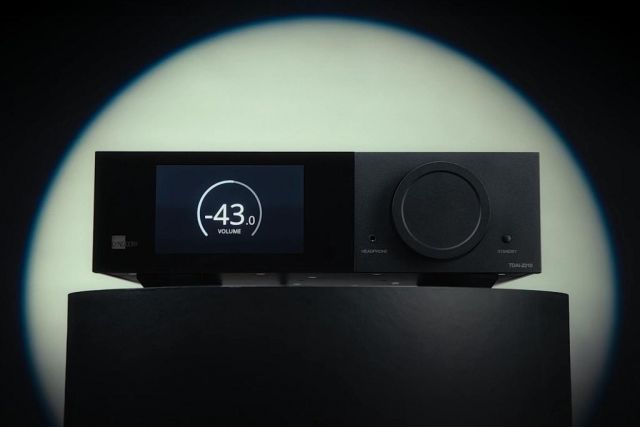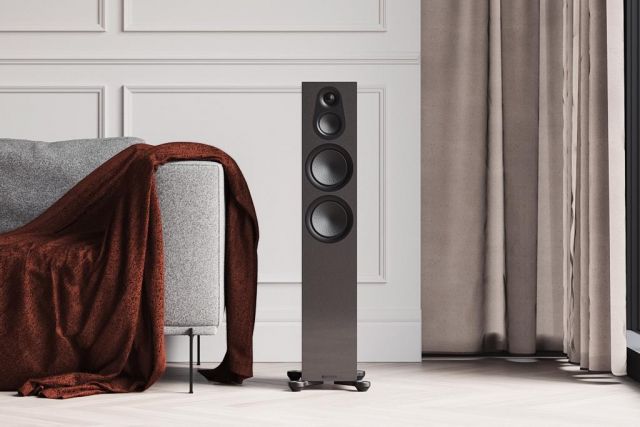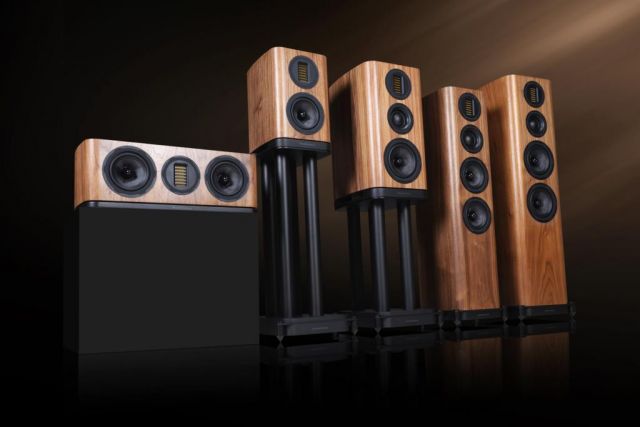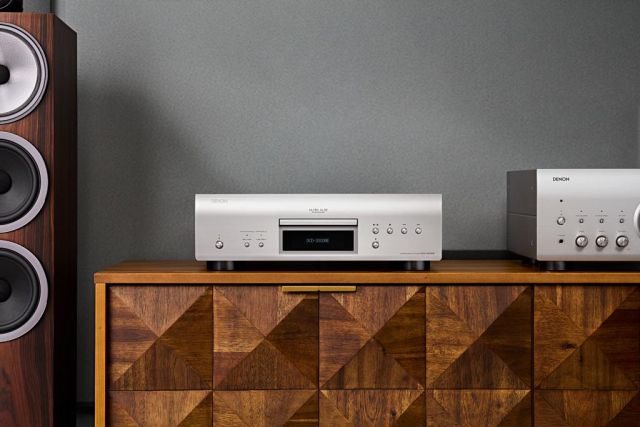
- Interviews
- Posted
John Franks - Chord Electronics
Just as we were finishing the review of two DACs by Chord Electronics, we had an opportunity to meet the founder of the company and ask him some questions about the technology used in the latest devices and his idea of a perfect sound reproduction so to speak. John Franks is not a musician or self-taught electronical engineer as it often happens, but an avionics engineer who knows his trade very well. This job and everything that goes with it, has been translated into the world of high-end audio equipment. The company was founded in 1989 and since then it has been associated with technical innovation and brilliant design. Chord's sources and amplifiers are not only intriguing to look at, but also full of stuff you won't find anywhere else.
Chord Electronics is not only a company making very nice and expensive amplifiers for audiophiles, but delivers its technology to some of the most famous professionals as well. The list of recording studios and other institutions using Chord's gear goes on and on. Its global customer base includes the BBC, EMI's Abbey Road Studios in London, Sony Music Studios in New York and Skywalker Sound to name but a few. You would imagine that Chord's products would not be cheap and in most cases that's true, but a couple of years ago John and his team came up with a pocket-size DAC called Hugo, which is Chord's technology in a small box that's actually within reach for many people. Now they are pushing the boundary once more with the Mojo - an even smaller DAC which basically has the same D/A conversion technology on-board. Along with the Mojo, Chord released its flagship DAC - the Dave. Before we had a chance to listen to them, I asked John about the technology used in these devices and where it all came from.
As we will soon have a chance to listen to the new Dave DAC, I wanted to ask you about this model. It's far more advanced than Hugo and Hugo TT, which you already described as one of the best DACs in the world.
We're fortunate to work with a consultant, a guy called Robert Watts, who is a true DAC designer. Let me explain. Most DACs that you see in audio equipment are actually based on a little industrial chip DAC at their heart. The problem with those little chips, the industry standard Wolfson, Burr-Brown chips is that they are good up to a point. They are not really very good because they are composed of little pieces of silicon, maybe two or three square millimeters, and on that silicon you have all the basic features of the DAC. They are very clever for what they are, but they are designed to a cost of just a few dollars. So they're really limited and relatively simple. Whereas in our DAC we don't use those chips. We've designed our own technology thanks to Robert Watts and it is a technology that he's been developing for over thirty years. It uses very advanced digital sampling and whereas a typical industry DAC chip would have maybe a 125 or so sampling filters, in the Dave we have 166000 digital sampling filters, it's many orders of magnitude, more complicated. If you could imagine our DAC as an analogy to a cityscape, let's say a great city like Shanghai or Tokyo or London with all the streets and underground, then an industry chip DAC in the same scale would be the size of a city block. So you're comparing a single block to an entire city. In electronic terms, our DAC is a big city.
How does it translate into sound quality?
The ultimate idea of the DAC is to reproduce the original waveform in all its complexity and perfection. The idea of the DAC is not to reproduce digital samples, which is that waveform. And if you can do that by taking as many samples as possible, faithfully reproducing all of the timing information which is locked in that signal, the strange thing about our brain is that it seems to be able to resolve information that technically our ears can't even hear. For instance, within our brain there is something like a line of neurons, that does timing between each ear. You can say it's a bit like a string of pearls. And when the timing from each of the ears hits it, it fires so that the brain knows where the sound is coming from. Apparently it's one of these fuzzy logic kind of things, but it's very accurate. And what it means is that if your brain isn't able to get the clear information of where the sound is coming from, it can't work out the positioning and timing information which makes the sound flat. People often say how wide is the soundstage but it has no depth because their DAC isn't measuring enough samples to give enough timing information to the brain.
So the timing of the signal is not just about the timing in music but also things like soundstage and realism?
Yes, correct. The best way to listen to a DAC is to listen to the depth. If there is a real layering in the music, if you can feel the three dimensional events, if the singer is moving just a few inches to left or right, you should be able to hear that because of the timing information. But as I was saying, most industry DACs don't give this information, they just don't process enough samples, because they are very limited inside. I'm not the best person to talk about this because mainly I'm a power engineer, but Robert could go on about this for hours with great detail. The thing about Dave is that the overall measured performance is not just better than everything on the market - it's the world class results, it really is the best DAC there's ever been. And we can prove it, it's parameters are outstanding, no other DAC can get close to Dave in measurements and that's an actual fact.
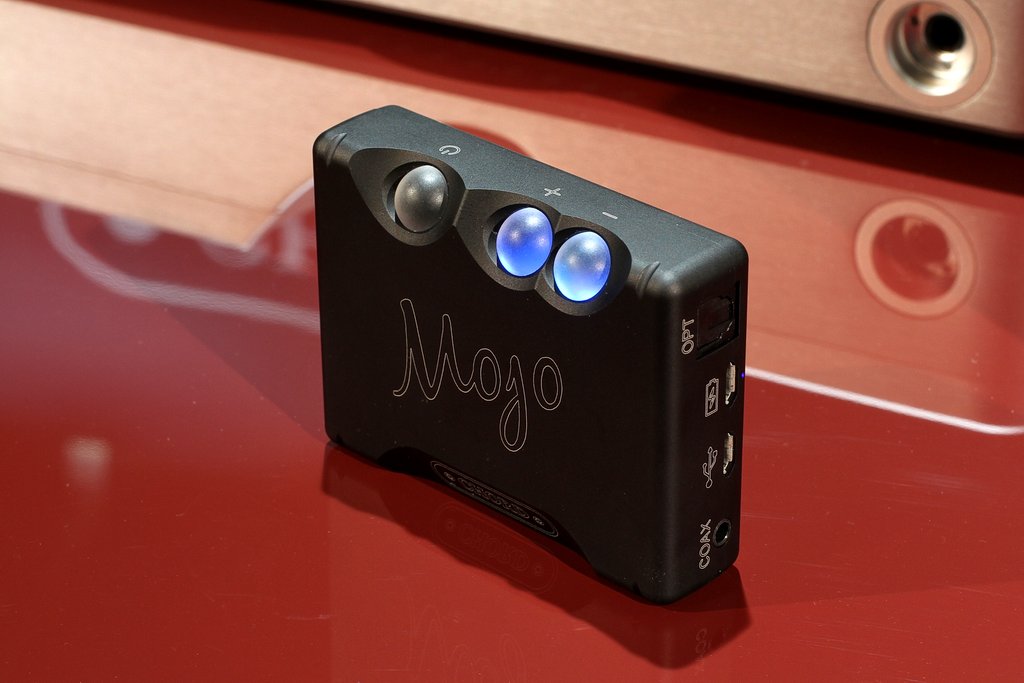
When did you decide to make your own DACs, not using the standard chips?
We started 24 years ago with a product called DAC64. You see my background is that I was an avionics engineer which required a no-compromise approach. In avionics you can never apply a secondary solution to a primary problem. You cannot mask it, but reach the real problem and fix it at its core, no matter what it takes. It's all got to be right. So I already had this philosophy and then I met Robert Watts who had his own company at the time, we met in Las Vegas. About a year after this meeting he gave me a call and he said John, I've got this design idea we talked about and I'd like to come and show it to you. So he came down with this board and on it there were four large FPGAs, and I said it looks very interesting Robert but also quite expensive, because a normal industry chip is tiny. And he said - just have a listen. When I listened, really my thoughts were - this is so good that he has obviously created a better way to build a DAC. This spoke to me with my avionics background because he got to the source of the problem - the DAC chip. They are too limited in what they do, so putting that to one side and applying his knowledge of acoustics... You know, the beauty of what he could do was that he did many listening tests. Normally when a DAC chip comes off of the foundry, that's the first time when the engineers hear what they have designed. They are not able to go into the noise shaper and try different versions of the noise shaper, of different mathematical formulas within filters, whereas Robert is, and he does many listening tests during his work. Because of that, he was able to refine the design over a long period of time. So this is actually the only DAC he could listen to during its design cycle.
So in a way, it's a bit like programming when sometimes you write huge amounts of code, then compile it and hope for the best.
Yes, exactly. In this case this is a FFT with a 2,55 V RMS output, and essentially it has no noise because he's been able to go through and keep designing, keep refining the design until it's absolutely perfect. You see, in his working life Robert has also designed chips, and he knows how cost sensitive these chips are. For example, the whole design can be thrown away because they've used a certain type of die which costs 5 cents more than the marketing had in their budget, so they will scrap the ten million dollar worth of work, they will throw it away. So he knows how cost sensitive and how trimmed, basically how crude these designs have to be to hit the budget, to get into the production stage. So I gave him carte blanche to design anything he wants as long as he's happy with it. So he's done it almost like his electronic hobby, because he's worked as a consultant to big companies, and they got hundreds of great engineers but they all had to refer to him. Because he said - do it this way because it will work, if you do it the way you want, you'll run into problems. And so sometimes, what a lot of the engineers were saying to him is that his figures were ridiculously low, that they were way below the threshold of hearing. For instance there was a FFT of a noise shaper and it was about a 150 dB down and it had some noise but technically it was so perfect, and there was other plot that had about 200 dB down, below 0 dB, so it's very, very low levels of distortion and noise. In Dave, in the digital domain, we're looking at 350 dB. So it's madness. You would think, but he had a lot of arguments with a lot of engineers from the chip company and they were saying that what he was saying was nonsense because below 150 dB you will never know. So he said come down to my place and I will play you some music with a 150 dB noise shaper and he was able to plug in a switch between minus 150 dB and minus 200 dB and the engineers were staggered, very surprised because not only did they hear the difference, but how big difference that was. So after that they didn't argue anymore.
So what engineers were they? Were they designing some audio equipment or other electronics?
They were chip engineers, I guess normally not dealing with music so much. But they were obviously designing chip DACs, mixed signal stuff. Robert is a consultant to some of those big corporations. At Chord Electronics it was a kind of labor of love until we developed something called the Hugo. It was a combination of many things Robert had done, and we were always going to develop his ideas to the point where we are now with the Dave. But a few years ago we decided to spin out a mobile product, that became the Hugo, and we were thrilled when we found that instead of selling maybe 2000, we've sold many times that.

I know it was a great success, but Hugo is expensive, it costs three or four times what other DACs of this size cost.
Yes, but it sounds that much better. It has been an amazing product for us. Over the years we've been quite lucky because we had something working for us which was the Moore's Law. Gordon Moore was a co-founder of Intel and Fairchild Semiconductor who prophecized that the number of transistors in every chip would double in every 18 months, and that was correct for the long time, in fact lately it's been doubling every year. And of course the numbers that are in chips now are astronomical. So if we go back to the first DAC we designed, the DAC64, then it needed four FPGAs running at 3,5 V and the power requirement for that machine was about 45 watts. We can now put far more electronics into just one huge FPGA that runs at a fraction of a watt, does all the computation, in the Hugo we had 16 DSP cores, in Dave we have 166, and now we can put many many DSP cores all running together to do the computation. It just means that FPGAs are becoming very, very powerful. We've actually just launched another product, the Mojo, and it's a very high performance product and I think you will say it's available at a very fair price. Mojo is just as powerful as Hugo, you power it by USB, it charges for four hours, it will play for eight hours, if you have any music on your phone you can play hi-res files through it, it's really a high quality product. It would drive any headphones from 4 ohms to 800 ohms, but the price - £399. It's really not a lot for what it is. We recognize that even the most expensive desktop DACs will not perform as well as that. This is all based on Robert Watts' designs.
So when he came to you and said he could design a DAC which sound so good, you must have done some economic calculations and worked out that even if he succeeds, such a DAC will be very very expensive. I guess this is what Dave is, the ultimate version of this idea. So are you now trying to bring the cost down with the Mojo?
Yes, you are absolutely right. These thoughts did go through my head because essentially we are using four FPGAs and a couple of years ago each of these FPGAs cost 50 dollars, so I knew the whole DAC was going to be expensive. But it was only before I heard it. It was so much better than everything I compared it to. One of the problems with the chip DACs is that their design cycle is very lengthy. They can't afford to bring out new designs every two years, it's too complicated, the whole process of fabrication and the design process. So it takes five or ten years before we have a new, better chip DAC. Wolfson pushed the boundary, but even their latest chip DAC is nothing so special at all because it's just a little piece of silicon. We have pieces of silicon which are probably 10-20 times bigger, it's much larger and therefore there's much more going on. When our first DAC was being designed, there were really not that many outboard DACs on the market. They were mostly designed for CD players. It would have been around 1996 so quite some time ago.

So nobody back then was thinking of listening to hi-res files through a computer?
Not really, no. It was a different world, there were of course CD players with digital output so you could access the data. That's why we built the DAC64 and a lot of reviewers have written that there was clearly something about this device, and they must have been right because we sold over ten thousand of these DACs. But it remained in production for nine years, so we had a very good time with it. Obviously when Robert came to me I thought the guy is crazy, but I sat down, realized how good the sound was, and I said okay. If I back it we're looking at low rate production anyway so let's see if people could hear what I heard. I just had this feeling that if it was an aeroplane, I would back it because it's the right thing to do. So that was my viewpoint at that time. We've had a very good cooperation with Robert, you know we bicker like old ladies about the design, about the details. For instance there is a red charge light on the Mojo, when it's being charged, and Robert was adamant that it should be on top of the device. So we argue until I get my way and then we're happy.
Does he win sometimes?
Yes, if it's something to do with the internal architecture, but as for everything you would experience from the user's point of view, I normally win and then he realizes I was right. For the better of it really.

Isn't it a waste putting this whole design into something so small as the Mojo?
Oh I think such products have a great future. In case of the Mojo, I wanted it to be something really unique, like a pebble just with buttons and stuff. Even the feel of the thing is something you would remember, or the fact that the ball rotates. It doesn't do anything, it could have been a normal button but it's just nicer this way. I just wanted it to be something people would like to hold and play with. The reason we managed to get it to such a low price is because we've negotiated really, really hard not only with our subcontractors, but with all of their suppliers. The chips used in it, at a low volume, would cost about the same as this whole product, where actually we got really good deals but we had to commit to massive volumes. On the web there's been a large amount of press and people saying it's a DAP, but you see I don't believe that DAPs have got a really long life because everyone carries a phone. Personally I like DAPs, I like the way they play, but if we apply the Moore's Law again, the amount of memory and computing power we have in our phones now will be nothing compared to what we will have in five years time. It's going to be massive, we are going to use our phones for things we wouldn't dare try today. Like listening to hi-res music for instance. So if you have a really great DAC now, you can use your phone as a source already. I have 128 GB on my phone now, so the next one after that will probably have 512 GB or 1 TB. Combine it with the network speeds you get, and listening to hi-res music is fairly simple.
So the Mojo is built primarily for mobile phone users?
Yes, but not only that. In this DAC we've used a new type of battery for instance, it's a high temperature battery, it would actually work up to 160 degrees, not that we would get anywhere near that, but it's a very dense energy storage design, so this is just as powerful as Hugo. And you can use it with your phone as well as a laptop or any other digital source. It doesn't need any external energy source, you can power it from a USB cable, and you will still get an amazing sound. To be so small, the Mojo is built like a really expensive camera. Also, as all of our products, the Mojo is made entirely in UK. What we want to achieve with the Mojo is not to win against our competitors, but to convince everyone to switch to high quality music. Because it can be really easy. All you need for a start is this relatively cheap device, a good phone with some music on it and a pair of descent headphones. And you can experience something really great. I believe that half of the people in the world are audiophiles, on some level of course. And having visited lots of places I know there are many, many poor people in the world. They have good lives but they just don't have the money we have. So in a way I wanted to democratize the world with the Mojo, because really all of these people have smartphones, but the music from a smartphone is poor. So what's there to stop you from buying a Mojo? You just plug this little thing into that little thing and wow - you've got a concert hall in front of you.

So what you're saying is basically the same thing that happened to headphones in general. Ten years ago something like Sennheiser's HD 600 was considered a high end product for home use, and now anywhere on the street you will find people in headphones which cost more than these.
Yes, I think we also have sociology working for us here. You know, I'm 60 now but when I was young, when a guy wanted to build his own life, if he had a girl there was already a view to marriage. He would go out with her, marry her, have children, move into their own house, get a car, get a TV and number three - a hi-fi system. Now young people don't worry about the future so much and they often live with their mom and dad because they're comfortable. Also it's hard now to buy a property, much harder than it was back then. So there are lots of people who live normally, have a personal life but stay with their parents, which leads to limited space. Sometimes, especially in Asia, their personal space is really small. Often they are not allowed to play their own music, so they need a small hi-fi system, and they often do a lot of listening on headphones because their parents don't want to listen to it. I've done some study on this actually. How old do you think an average Italian guy is when he leaves his mother? I will tell you - 42. And the reason he leaves is that his mother is getting too old to cook and clean for him. It's very sad. It's a real study, it's shocking I know. But then what does he do? He goes and lives with his girlfriend. He may have had her for twenty years, but he moves in with her at 42. In a way that is happening all over the world.
I didn't realize that. But anyway, when they finally move into some new house or apartment, anything from the 'home entertainment' segment comes after the kitchen, bathroom, TV or even a car. What I mean is that hi-fi is usually not the first thing on your list when you're building your own home.
Yes but the thing is - everyone loves music. So we're trying to democratize high quality in music. That's why we made the Mojo, and Hugo before that. I mean, we still make all the hi-end gear, we are still generally recognized as a hi-end brand, but I want to make more people enjoy music at its best. Everyone can hear the difference between a standard DAC and our DAC, just as everyone can clearly hear the difference between the music from a phone and the music played by the Mojo. You know, we intend to build hundreds of thousands of these. Seems a lot but because there 3,5 billion smartphones, that's 3500,000,000, even if we only only sell the Mojo to 1 of every 10,000 of these smartphone owners, that would still be 350,000. So huge numbers, I know it sounds crazy, but we know once they get used to the sound if this, they will never go back. Since the Hugo, we found so many more people willing to try more of our stuff, so it has a bit of a snowball effect to it.
So what's next?
We are going to be very busy with the Mojo. We are promoting it all around the world. We are also going on production with Dave, which is a very high end product, but it's for the guys who can afford a £8000 DAC. We know there are lots of them, but not as many as those who can afford £399 to spend on a DAC. So we are diverging but the philosophy of bringing excellence to the individual markets. Because there are so many products out there, you just have to bring something good and new to succeed. The Mojo couldn't have been designed even before August, the chips in it are that new. So we are really exploring new territories here and what can I say, fingers crossed!


